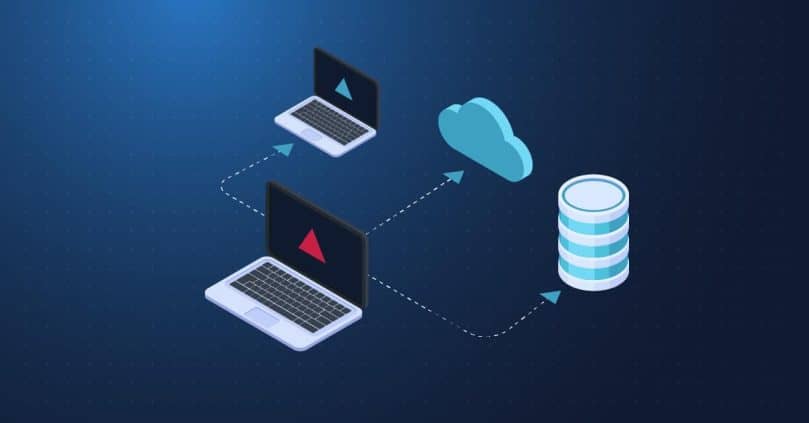A backup strategy is a plan to ensure that essential business data is backed up and ready to restore if there is any data loss. Organizations suffer from any downtime due to data loss, so it is crucial to minimize downtime as much as possible. Backup and disaster recovery (BDR) is essential to guaranteeing ongoing business operations.
This is important to consider: An estimated $4.45 million was lost in 2023 due to data breaches and losses, a 15% increase over three years (IBM). Experts predict this number will continue to increase in the coming years, particularly as the IT industry evolves.
According to the Cybersecurity & Infrastructure Security Agency (CISA), ransomware is the leading cause of data losses or breaches. This is why the agency continuously launches information awareness initiatives, such as its Cybersecurity Best Practices and #StopRansomware.
Tome of Backup Best Practices
Learn how to fight against the deadly enemies of data backup
How to create a backup strategy
Building a backup strategy can initially seem daunting, but it becomes much more manageable when broken down. A good starting point is to use designated backup software because the tools included in the software will be built to make backups easier. With the right tools in your hands, a backup strategy can be created with ease.
One commonly used plan is the 3-2-1 strategy. This entails having at least three copies of your data in different places, two copies on different mediums, and one copy somewhere off-site. This strategy aims to diversify where your backups are stored to ensure that your data is protected against any type of data loss situation.
This is an excellent standard strategy based on your organization’s backup strategy. But, this strategy only covers where your backups are stored. You’ll need to decide on other elements that will significantly impact how successful your backup strategy is.
4 Steps to Building an Effective Backup Strategy
1) Determine Data Importance and Availability
Each industry has various kinds of data they collect. Therefore, it’s essential to be aware of which data is crucial for ongoing business operations because then you can prioritize the backup of that particular data.
Critical business data should also be available soon after a data loss event. First, decide how soon you’d like any lost data to be available and weigh it against the cost and resources of deploying and maintaining backups of various sizes. This often means deciding between onsite, offsite, or cloud-based backups.
2) Decide on Frequency and Regulation
When it comes to backing up your data, regulating the frequency of backups matters quite a bit. There are multiple backup types to choose from, and each can have varying frequencies. So, for example, in the case of a data loss event, the data you’re able to retrieve depends on the frequency of your backups. So you’ll only be able to retain the most recently backed up data. Anything since then will be lost, and you’ll have to find a way to regain it.
This is also where regulation is key. Think about the amount of data your business currently has and how much it produces. Then, consider how often all of this data needs to be backed up. Finally, the regulation of your backups allows you to take control of and maintain your backup frequency and quality.
3) Deployment
The next step is to deploy your backups after you’ve thought about and planned how you’ll back up your data. For example, will you manually back up the information or assign it to a device or system to carry out the task?
It would be best if you also created a schedule based on the frequency of backups and data availability you decided on previously. Ensure that the number of times you deploy your backups matches your goals as part of your backup strategy.
4) Test your Restore Process
The final step for creating an efficient backup strategy is to ensure your backup procedure works through testing. It is never wise to assume that your backup strategy works without trying it out. A backup strategy ultimately fails if it doesn’t manage to back up your data and restore it seamlessly correctly.
Testing can be performed through the use of simulations. The simulations replicate what would happen in the event of an actual loss of data. When testing is carried out, it can provide you with important information, such as how quickly you can get your company back online. It also helps to show any issues with the backup and restoration process you might have overlooked or not known about previously.
Who needs a backup strategy?
Any organization with any sort of data stored on a device will need to create a backup strategy. Doing so will significantly decrease downtime and support ongoing business operations. Though some strategies may require less planning, work, or detail, every backup strategy is essential to continued business success. Having some type of backup strategy outlined in advance will equate to far less stress if data loss occurs.
With its advanced backup technology, NinjaOne’s data recovery software is designed to safeguard your digital assets.
Best Practices for Backup Strategies
Diversify your backups
There is always a risk with storing and preserving any digital information. Accidents and disasters come unexpectedly, so it’s impossible to know the perfect backup process for any data loss event. A smart move to prepare for the unexpected events that will surely come would be to diversify your backups by either sending them to multiple locations or storing them on different mediums.
Document your backup strategy
Once you’ve formulated your backup strategy, document and include it as part of your business processes; recording your backup strategy will increase the efficiency in which it is carried out and improve overall business outcomes. Check out IT Documentation best practices for tips on effectively documenting your strategic backup process.
Create a schedule
If you’ve figured out that performing one backup daily will help you reach your backup goals, then make sure you create a daily task to accomplish that. Set up a schedule in your organization to have backups consistently carried out by someone or a system. Performing them regularly will help to guarantee the safety of your data.
Automate
It can be challenging to remember to backup the data every time you schedule it, which often means that some backups get missed. Unfortunately, most businesses can’t afford to simply “forget” to backup their data, which is where automation comes into play. You can altogether avoid human error by using designated backup software with automation to schedule backups you don’t have to oversee.
Test restore
The whole reason organizations back their data up is so they can restore it in the future if needed. Thus, a backup strategy is only as good as its ability to restore the saved data effectively. Test your backups’ restore ability by using simulations that mimic actual disasters and data loss.
Continuously monitor
Make sure you don’t simply forget about your backup strategy. It is helpful to set it up, so you rarely have to interfere or fix anything, but that doesn’t mean you should let it slip from your mind. Consult backup reports regularly so you know what data was backed up, how it was backed up, and how it can be restored if needed.
Tome of Backup Best Practices
Learn how to fight against the deadly enemies of data backup
Backup Strategy Success with NinjaOne
There are many necessary steps involved in building an efficient backup process and best practices to keep in mind, but creating a customized backup strategy will lead to more tremendous success for your business. Read about NinjaOne’s backup success with Red Road Networks to hear about their success in using backup.
See backup success for your business by trying out NinjaOne’s free trial.
Frequently Asked Questions (FAQs)
1. Does a backup strategy guarantee that data can be restored successfully?
Yes, especially if you work with a trusted backup software provider like NinjaOne. Your backup strategy pre-emptively addresses potential losses and ensures that data is protected and can be restored quickly in case of an unexpected system failure.
2. Is it necessary to include all data in a backup strategy?
Experts recommend backing up all critical data, such as files, databases, operating systems, and devices, to minimize downtime. If you’re a larger organization, including all your data in your backup strategy may not be possible, but covering your most important ones is crucial to your operational success.
3. What is the 3-2-1 backup strategy?
The 3-2-1 backup strategy is a robust approach to protecting your data. It refers to maintaining three copies of data (original data plus at least two backup copies) across two different storage media (it’s better if you store data on two distinct types of media, such as local drive and cloud storage) and one off-site backup.
4. Can a backup strategy prevent all data loss scenarios?
It must be noted that no backup strategy can prevent all data loss scenarios. However, an effective plan can significantly reduce the risk of data loss from human error, ransomware attacks, physical disasters, and corruption.
5. What is the fastest backup method?
The fastest backup method depends on your data volume, backup frequency, and recovery needs. That said, thousands of clients worldwide trust NinjaOne for their backup needs. Its comprehensive business backup tool is praised for its speed and quick restoration.









